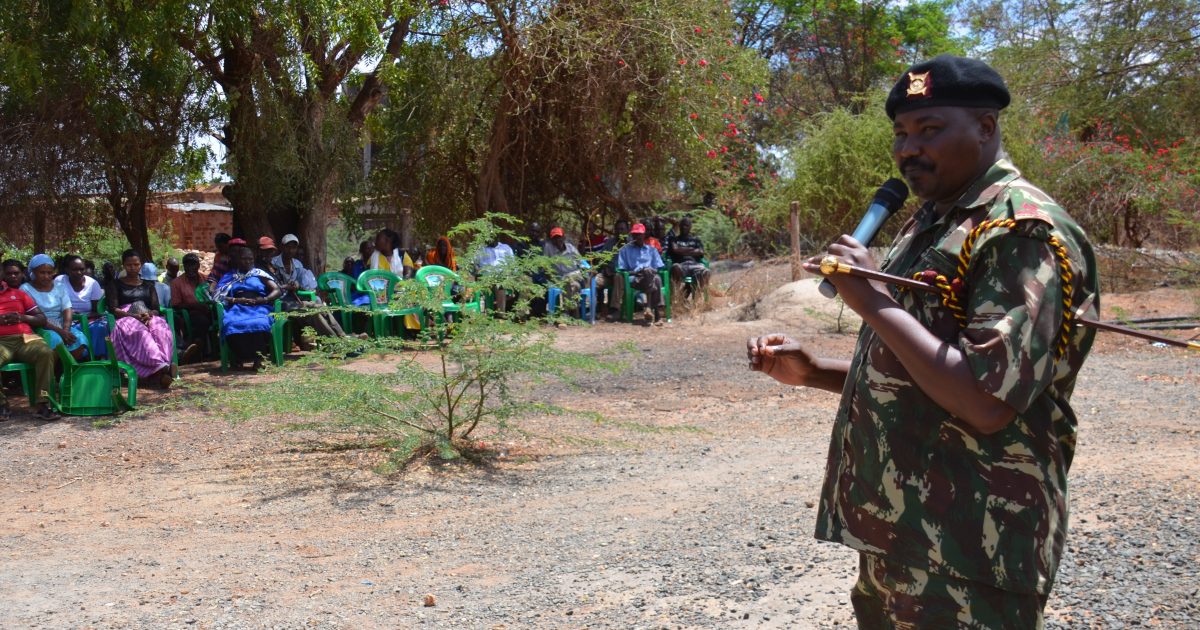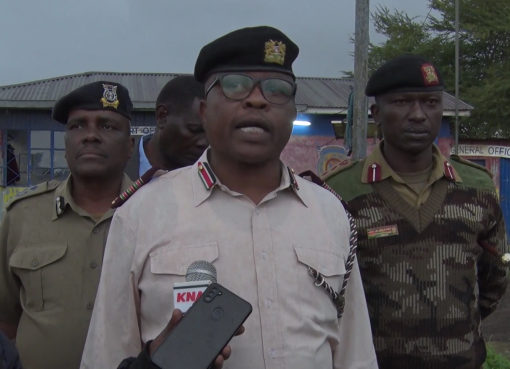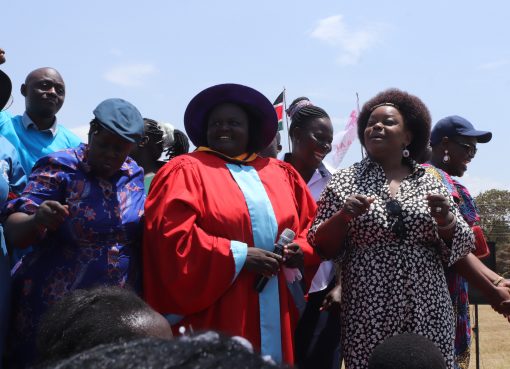On a late afternoon in October this year, a multi-agency security team from Voi sub-county raided the home of a local politician at Maungu area along Nairobi-Mombasa Highway. A public tipoff had linked the suspect to gangs vandalizing high-value critical infrastructure in the region.
The raid turned out to be a jackpot for security agencies in the fight against vandalism. Tucked in dusty corners of a store at the suspect’s home were several pieces of reinforced steel said to have been stripped from Kenya Electricity Transmission Company (KETRACO)’s pylons. These giant structures cut across the region holding up high-voltage power cables used to evacuate power over long distances.
Mr. Zechariah Mwangi, the Commandant of Energy Police Unit under the Ministry of Energy and Petroleum, says the case is currently in court. He says that targeting such valuable and sensitive infrastructure is the criminal equivalent of economic terrorism.
“The public should know that anyone benefiting from such despicable acts must face the full wrath of the law,” he notes.
Over the years, deliberate acts of vandalism targeting several high-value critical government infrastructures in Voi sub-county especially in many villages along the busy highway have become a constant headache for law enforcement in the region.
Mr. Charles Kiprono, Critical Infrastructure Protection Unit (CIPU) Commander in charge of Voi sub-county says vandals and other criminals out to make a quick buck have made attempts to target high-value infrastructure in the region.
He explains that seamless coordination and collaboration by different security agencies have kept vandals at bay. This success has been attributed to conducting regular patrols to check on the soundness of the structures, real-time response when called to address an emergency and establishing good rapport with members of the public who have become critical in providing information to thwart criminal activities.
“We must do this because this region is very important in hosting several key infrastructures that need protecting for the benefit of the country,” he said.
Located strategically along the Nairobi-Mombasa Highway and at the junction of Voi-Taveta Highway, Voi is home to some of Kenya’s most critical high-value multi-billion shillings infrastructure. They include KETRACO’s towering steel pylons, Zakhem’s high-capacity oil pipeline, Mzima water pipeline, the Standard Gauge Railway (SGR) and Kenya National Highway Authority (KeNHA’a) highway and road signage.
The highly hazardous nature associated with some of these infrastructures like power pylons and oil pipelines demands that they be located in remote areas and away from human settlement zones. The remote location ironically makes them susceptible to vandals and this calls for enhanced surveillance.
During one such reconnaissance drive, the security team came across deep holes excavated under a one power pylon by suspected sand harvesters. The digging had significantly weakened the base of the pylon exposing it to the risk of collapsing.
“The sand harvesters did not care that their acts could cause great damage to themselves and to the country,” says Mr. Kiprono.
Mr. Dominic Watali, a security official with KETRACO in Coast Region, says vandalism remains a threat to national security. He pointed out that the stretch between Samburu, Taru and Maungu is a hotspot for vandals as most of the stripped metal pieces from pylons and KPLC power cables are being sold off cheaply to scrap metal dealers.
He further disclosed that welders and fabricators had emerged as the new promoters of this illegal business by providing a market for all materials vandalized from pylons, road signage and power cables.
“The welders and fabricators are the market for these illegal commodities stolen from the public. Those businesses dealing with vandalized items will be dealt with firmly,” he said.
During a recent public awareness campaign at Maungu area, Mr. Watali said it was just a matter of time for anyone engaged in stealing or handling stolen metal plates from KETRACO before they were caught. He disclosed that all prefabricated metal bits used in assembling the pylons were branded with unique identification numbers for easy tracing.
He pointed out that attempts to erase the numbers using grinders or to conceal them using paint was futile. He disclosed fabricators were using the metal to make chapati pans for domestic use.
“The numbers drilled on the metal cannot be erased off. Each one is unique. Fabricators and welders need to keep off such metals or else they will land in jail,” he said.
Vandals are also targeting oil pipeline’s chambers and signaling points that monitor activities along the pipelines.
Ms. Kula Hache, Secretary of Administration in the Ministry of Energy, called upon members of the public to increase vigilance on government infrastructure within their localities. She pointed out that vandals were robbing the local residents of their rights to enjoy government services.
Ms. Hache said government assets were publicly owned and anyone destroying them for their selfish interest should be promptly reported to law enforcement.
“All these facilities; from the pylons to power cables and transformers are public property meant to bring services to the people. Anyone who steals or destroys them is working against the betterment of the public and should be reported immediately,” she said.
To enhance surveillance of critical infrastructure in the region, the government has now tapped into the extensive Nyumba Kumi security networks and community policing to boost the monitoring activities.
Mr. Kiprono says the security team had several engagements with community members in areas prone to vandalism. These drives are meant to craft ways on how to scale up monitoring the critical infrastructure and promptly report any nefarious activity.
This engagement is also meant to educate local residents on dangers of vandalism and the importance of keeping the infrastructure safe.
“We are working closely with members of communities to help weed out the vandals amongst them. This will also go a long way to educating the communities on the risk of destroying such facilities,” he said.
By Wagema Mwangi





